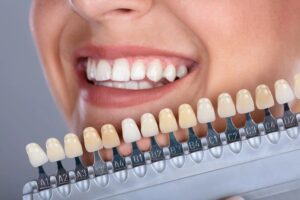
Welcome to the fabulous world of Rhinoplasty, where the only thing getting a lift is your nose, and perhaps your self-esteem! This surgical escapade is not just about turning a honker into a looker; it’s a dazzling blend of artistry and science, crafted to reshape your sniffer while ensuring you can still smell the roses—or pizza, if that’s more your style.
Rhinoplasty can work wonders, whether you’re aiming to fix a bump, enhance your breathing, or simply join the ranks of nose enthusiasts worldwide. With various techniques and reasons for seeking the procedure, it’s a bustling realm filled with patients dreaming of their ideal profile and surgeons ready to make those dreams a reality.
Rhinoplasty Overview

Rhinoplasty, often whimsically referred to as a “nose job,” is not just a fancy way to transform your schnoz into a more aesthetically pleasing version of itself; it’s also a procedure that can elevate self-esteem and improve one’s breathing capabilities. Whether you want to straighten a crooked nose or fix a deviated septum, rhinoplasty serves multiple purposes beyond cosmetic appeal.
The benefits of rhinoplasty are as varied as the shapes and sizes of noses themselves. A well-executed rhinoplasty can enhance facial harmony, boost confidence, and even remedy functional issues such as breathing difficulties. Individuals often report feeling more confident with their appearance post-surgery. The transformation can also be life-changing, leading to increased social interactions and improved quality of life.
Types of Rhinoplasty Procedures
Rhinoplasty isn’t a one-size-fits-all kind of affair; there are several types of procedures to cater to different needs and desires. Each type serves a unique purpose, ranging from purely cosmetic adjustments to more intricate functional improvements. Below are the primary types of rhinoplasty procedures:
- Open Rhinoplasty: This involves making a small incision on the columella, the tissue between the nostrils, allowing for more extensive reshaping and visibility of the nasal structures. It’s like giving surgeons a backstage pass to your nose.
- Closed Rhinoplasty: In this method, incisions are made inside the nostrils, which leaves no visible scars. This is often used for minor adjustments and is less invasive—a bit like a stealthy ninja operation.
- Revision Rhinoplasty: For those who may not be satisfied with their first toe-dip into rhinoplasty waters, revision rhinoplasty allows for corrections or enhancements of previous surgeries. Think of it as a second chance to get it right!
- Non-Surgical Rhinoplasty: This is often done using fillers to reshape the nose without any incisions. It’s a quick fix for those who want to dabble in nose enhancement without the commitment of surgery—like trying on a new hat!
Common Reasons for Seeking Rhinoplasty
Patients opt for rhinoplasty for a variety of reasons, often finding themselves on a quest for the “perfect nose.” While some motives are purely aesthetic, others are rooted in medical necessity. Here are some common reasons individuals seek rhinoplasty:
- Cosmetic Improvement: Many individuals desire a more balanced and attractive nose that complements their facial features.
- Breathing Difficulties: Rhinoplasty can correct structural issues, such as a deviated septum, facilitating better airflow and improved breathing.
- Injury Repair: Those who have experienced trauma leading to a misshapen nose may choose rhinoplasty for both cosmetic restoration and functional improvement.
- Congenital Defects: Some individuals are born with nasal deformities, and rhinoplasty can help in correcting these birth defects.
- Self-Confidence Boost: Many patients report a significant boost in self-esteem and social interactions following the procedure, often likening it to shedding layers of insecurity.
Health Implications of Rhinoplasty

Rhinoplasty might seem like just a fancy way to get a new nose, but it’s not all about looking fabulous for selfies. While it can provide aesthetic benefits, it’s essential to delve into the potential health risks that come along for the ride. After all, a nose job is still a medical procedure, and like any such procedure, it requires some serious consideration of what could go wrong when you decide to go “under the knife.”Rhinoplasty can carry a variety of health risks, not just from the surgery itself but also from how it may affect your body post-op.
Complications can range from the minor inconveniences of swelling and bruising to more serious issues such as infection or hematoma (a collection of blood outside of blood vessels). Those who have pre-existing conditions or respiratory issues may find themselves in a particularly tricky situation, as the surgery can impact their overall breathing capacity, especially if they rely on their nasal passages to keep their airways clear.
Impact on Respiratory Health and Asthma
The relationship between rhinoplasty and respiratory health is crucial, especially for individuals with asthma or other respiratory conditions. Surgical alterations to the nasal structure can inadvertently affect airflow, which is vital for anyone with pre-existing lung issues. Here’s what you need to know:
- Airway Obstruction: Post-surgery swelling can lead to temporary airway obstruction, making it harder for asthmatics to breathe freely. It’s akin to trying to breathe through a straw while someone is giving you a lecture on the importance of deep breathing!
- Asthma Management: Patients with asthma should be cautious, as any increase in nasal obstruction can trigger asthma symptoms or attacks. It’s like adding fuel to the fire when you’re already battling the smoke!
- Post-Operative Care: Proper follow-up care is essential for recovering patients, particularly those with respiratory issues. Regular check-ups can help ensure that any nasal changes are not exacerbating existing health problems.
“A clear nose is a happy nose, especially if you’re already battling hay fever!”
Patients must be proactive in communicating their respiratory history with their surgeon. This includes discussing any asthma triggers, medications, or previous breathing issues. A thorough pre-operative assessment can lead to tailored surgical approaches that mitigate risks while still achieving the desired cosmetic results.Additionally, post-operative care should be extremely attentive. Keeping nasal passages clear post-surgery with saline sprays or following a prescribed care routine can help in maintaining optimal respiratory function.
This is especially important as the nose plays a significant role in filtering and humidifying the air we breathe—no one wants a nose that can’t do its job, right?The takeaway? Rhinoplasty is not merely about aesthetic enhancements; it can have significant implications for health, particularly respiratory health. So, while you might be eyeing that perfect nose, make sure your breathing is part of the picture!
Rhinoplasty in Relation to Cosmetic Surgery Trends
Rhinoplasty has become the belle of the cosmetic surgery ball, strutting its stuff alongside other popular procedures like breast augmentations and tummy tucks. As trends shift faster than you can say “scalpel,” rhinoplasty remains a fan favorite, often influenced by the glamorous world of social media. Let’s dive into this fascinating realm where noses get a second chance at love and looks!
Comparison of Rhinoplasty Techniques with Other Cosmetic Surgeries
In the vast universe of cosmetic surgeries, rhinoplasty has evolved into a refined art form, with various techniques that rival those of its surgical counterparts. While breast augmentations enhance curves and tummy tucks flatten the stomach, rhinoplasty focuses on the delicate balance and symmetry of the face. Different rhinoplasty techniques, such as open and closed rhinoplasty, can dramatically alter nasal structure with finesse.
Open rhinoplasty involves a small incision on the columella, allowing for more extensive reshaping, while closed rhinoplasty keeps incisions hidden inside the nostrils, perfect for subtle changes. In comparison, techniques in other surgeries, like the “waterfall technique” in breast augmentation, focus on achieving a natural appearance as well. The delicate dance of techniques leads us to consider how that relates to trends in other surgeries.
For instance, minimally invasive procedures are gaining popularity, making the nose job not just a surgical procedure but also an art. So, whether you’re aiming for a distinguished profile or just want to breathe easier, rhinoplasty is strutting its stuff right alongside the best of them!
The Influence of Social Media on the Demand for Rhinoplasty
Social media platforms, with their endless scroll of filter-enhanced faces and carefully curated images, have turned rhinoplasty into a trending topic that even your grandma is talking about. The #nosejob hashtag has amassed thousands of posts, showcasing everything from before-and-after selfies to heartfelt stories of transformation.Instagram and TikTok influencers are shaping perceptions of beauty standards, often leading to increased demand for rhinoplasty among their followers.
The phenomenon of “Instagram filters” has caused many to seek a real-life version of their digital facades. This social media effect has led to the rise of the “virtual consultation,” where potential patients can explore their options from the comfort of their couch while munching on popcorn. The fascination with cosmetic enhancements is a testament to how digital culture can influence real-world decisions, bringing rhinoplasty into the limelight like never before.
Guide for Patients Considering Rhinoplasty
For those contemplating a rhinoplasty, having a handy guide is as essential as a good pair of surgical gloves. Here’s a breakdown of critical questions to ask your surgeon, ensuring you’re equipped for a smooth journey to your new nose!
What is your experience with rhinoplasty?
Understanding the surgeon’s background helps build trust.
What techniques do you recommend for my specific needs?
- Discuss which approach is best suited for desired outcomes.
- What are the potential risks and complications?
- Knowledge is power; knowing the risks can help manage expectations.
- Can I see before-and-after photos of your previous patients?
- Visual evidence can help gauge the surgeon’s capabilities.
- How long is the recovery process?
- Knowing what to expect can reduce pre-op anxiety.
- What are the costs involved?
- Financial transparency ensures there are no surprises post-surgery.
- Will I need a follow-up appointment?
Post-operative care is crucial for a successful outcome.
“The only way to do great work is to love what you do.” – Steve Jobs, possibly after a great rhinoplasty.
Navigating the world of rhinoplasty can be like trying to find a parking spot in a crowded mall—tricky but totally worth it when you find that perfect fit! By arming yourself with the right questions and information, you’ll be well on your way to achieving the nose of your dreams.
Final Wrap-Up
In summary, Rhinoplasty is not only about aesthetics; it’s a journey of self-discovery wrapped in bandages and followed by a dedicated recovery plan. So if you’re thinking of giving your nose the makeover it deserves, remember that it’s not just about looking good—it’s about feeling fabulous and embracing the new you. After all, a well-structured nose can change your view on life, quite literally!
Answers to Common Questions
What is the average recovery time for Rhinoplasty?
Typically, patients can expect a recovery period of about 1-2 weeks, but full healing can take up to a year. Patience is a virtue, especially when it comes to your nose!
Will Rhinoplasty affect my sense of smell?
In most cases, your sense of smell returns to normal once healing is complete, but expect a temporary disruption while you’re on the mend.
Can I wear glasses after Rhinoplasty?
It’s best to avoid wearing glasses for a few weeks post-surgery to prevent any pressure on your new nose. Contact lenses might become your best friend during this time!
Is Rhinoplasty a painful procedure?
While discomfort is common, most patients describe it as manageable. Your surgeon will provide pain relief options, so you can focus on your new look instead of the ouch!
Are there age restrictions for Rhinoplasty?
Rhinoplasty is usually recommended for those 16 and older, once the nose has properly developed. But younger candidates might need to put their dreams on hold until the nose hits its growth spurt!





